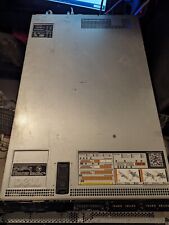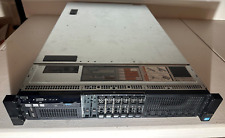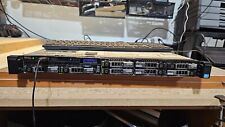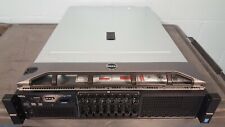-
Hi Charlie,
I suggest you do this though the ssh configuration files.
On the Knoppix machine the file you are interested in the file is /etc/ssh/sshd.conf. About line 5 you will find:
Change that. kl522 did mention this but he was trying to answer the question you asked, not the question you needed to ask.
You'll need to make sure your ssh clients use the same port. If that's another Linux machine or its a Windows machine with OpenSSH (e.g. running cygwin) I can help but if it is PuTTY I can't.
The original error message you got because sshd did not like the parameters it was passed by /etc/init.d/ssh because you did not give it the parameters the way it wants them. Ugly I know. As a consequence, sshd never started so there would be nothing in a log to find.
Using ssh involves a login: logins are recorded in /var/log/wtmp but this file is not human readable. Logging in involves a password authentication: these events are recorded in /var/log/auth.log. Errors from background process (daemons) should be logged in /var/log/daemon.log. However, as discussed before, Knoppix is a bit light on logging and you've now configured your own, so things may be different chez toi.
Knoppix runs without a password but you can't use ssh without passwords. It doesn't make sense. So, as Werner pointed out, KK provided a script to set things up correctly and you should use it because the script may deal with subtleties only KK knows about.
I expect you only need run the script once. It may well ignore any parameters you give it. You would need to examine the script to find out. It probably alters /etc/rc.local so that the ssh daemon is started automatically every time you boot. That will start it without parameters, so it will be running on port 22. You may then have trouble starting it later by hand or whatever using a different port - you'd need to shut the first instance down. I suggest you use the configuration file and then the first instance will run on the port you desire.
The scripts in /etc/init.d are intended to be run from a general purposes start-up script so they all provide the same interface - just one parameter: start, stop etc. Other mechanisms must be used for other parameters for debug purposes. The one used here is not terribly user friendly but that does not make it a bug. It is not intended for users (not that kind anyway).
At this level you are expected to understand the shell and how to use it. In particular, how to read other people's scripts. That's a long learning curve I'm afraid and you will find yourself getting things not quite right for a very long time. I mean years.
P.S. The file /etc/services lists known ports and which services use them. You'll see port 512 is used by the exec service. You are probably not running this service so you will probably be OK. However, to avoid the possibly of very weird behaviour, you should choose a port number that isn't listed in /etc/services.
 Posting Permissions
Posting Permissions
- You may not post new threads
- You may not post replies
- You may not post attachments
- You may not edit your posts
-
Forum Rules


DELL PowerEdge R730 Server 2x E5-2690v4 2.6GHz =28 Cores 128GB H730 4xRJ45
$458.00

Dell PowerEdge R620 Server 2x E5-2660 v1 2.2GHz 16 Cores 256GB RAM 2x 300GB HDD
$89.99

Dell R630 Server 2x E5-2620 V4 2.1GHz =16 Cores 128GB DDR4 1x 960GB 2x 1G 2x 10G
$210.00

Dell PowerEdge R730XD 28 Core Server 2X Xeon E5-2680 V4 H730 128GB RAM No HDD
$389.99

Dell Poweredge R620 2x E5-2680 2.7ghz 16-Cores / 128gb / H710 / 2x Trays / 750w
$199.99

Dell Poweredge R720 8x 2.5" Bay Xeon E5-2650 2.8GHz 8 Cores / 64gb No HDD
$114.97

Dell PowerEdge R620 Server - 128GB RAM, 2x8c CPU, 128Gb SSD/3x900Gb SAS, Proxmox
$260.00

Dell PowerEdge R730, 2 sinks, SystemBoard, 8 trays,H330,Idrac 8 exp, 2x750w Psu
$135.00

DELL PowerEdge R630 8SFF Server 2x E5-2680v4 2.4GHz =28 Cores 128GB H730 4xRJ45
$379.00

DELL PowerEdge R730 Server 2x E5-2697v3 2.6GHz =28 Cores 32GB H730 4xRJ45
$288.00



 Reply With Quote
Reply With Quote










